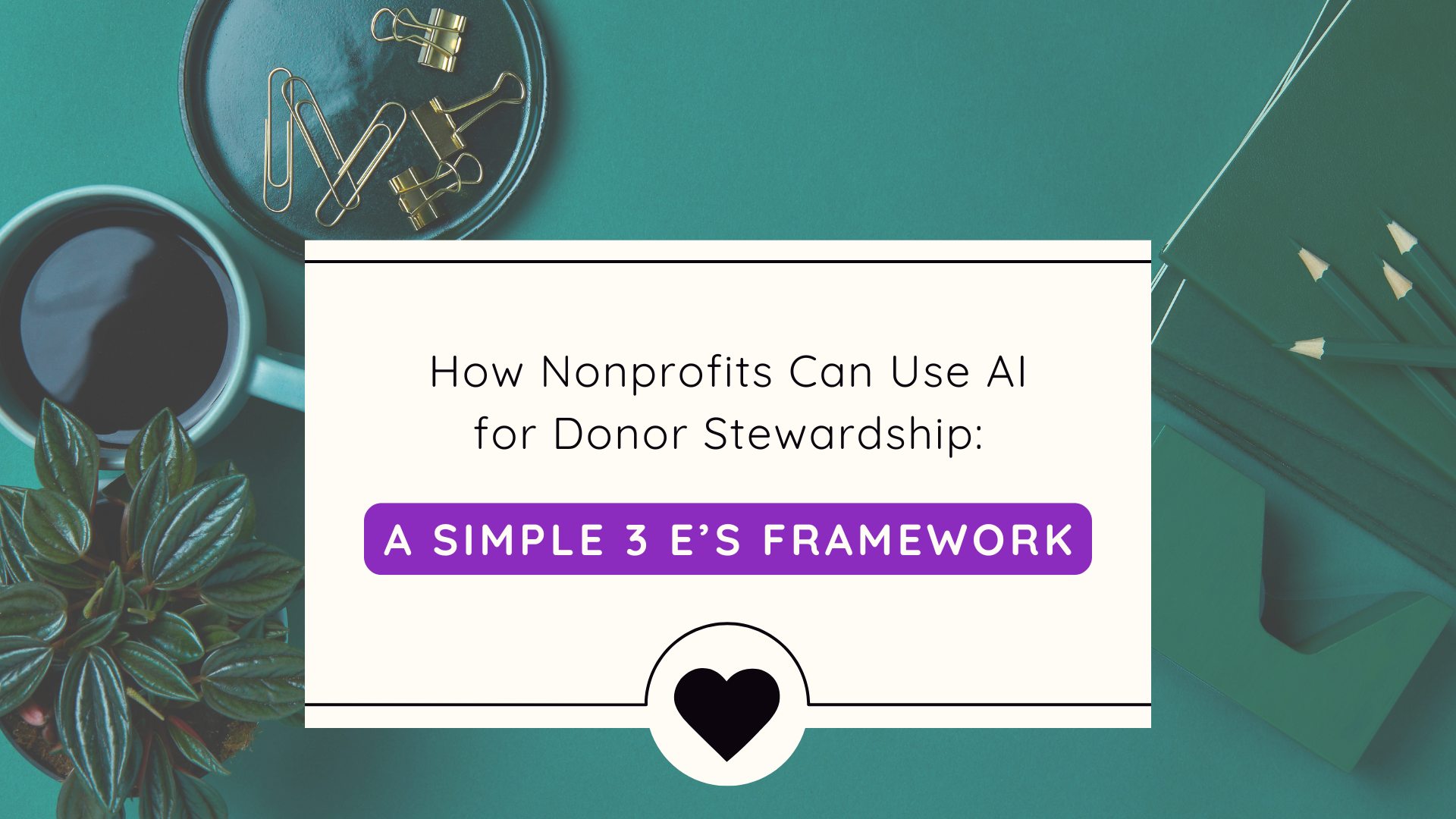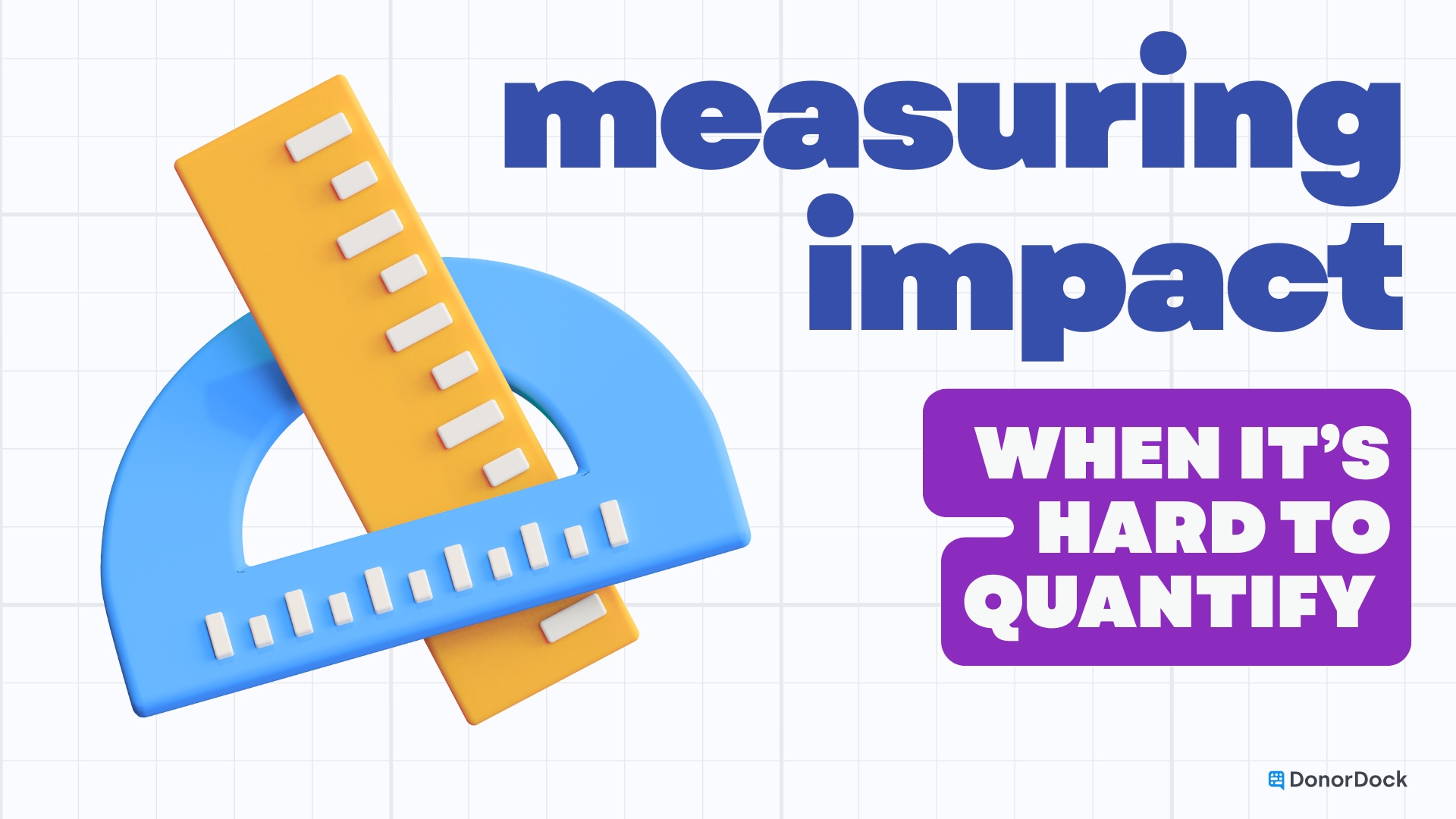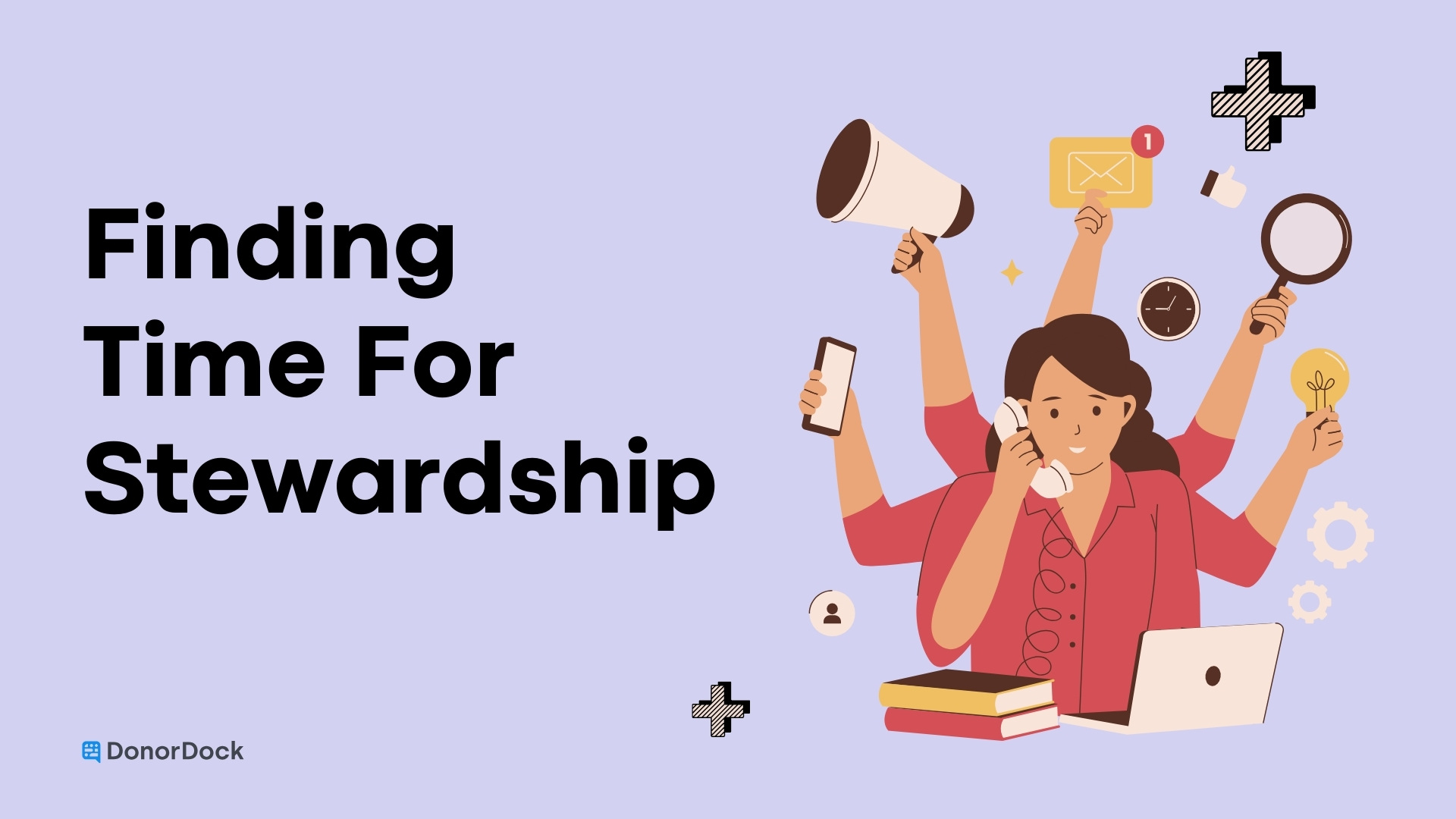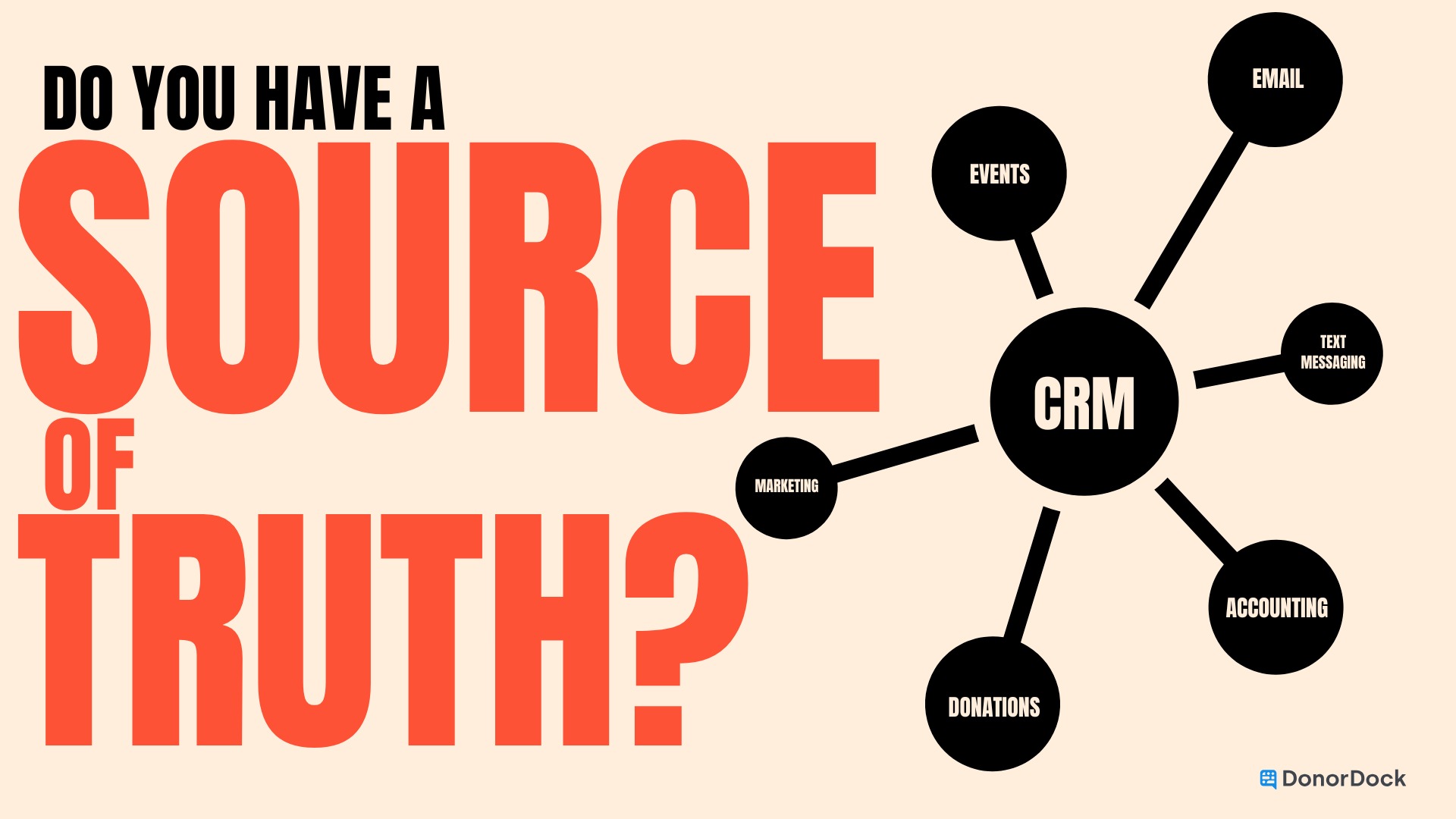When your team is tiny and your to-do list is loud, it feels safer to “fit donors in” around everything else. Moves management flips the script. It gives you a calm, repeatable path from first hello to joyful yes, so you can focus on what matters most and raise more without adding chaos.
Giving rebounded in 2024, reaching $592.5 billion, yet many shops are still raising those dollars from fewer people. That reality makes the quality of your 1 to 1 work more important than ever.
What moves management actually is
Moves management is a simple, structured donor journey. You plan a handful of intentional “moves” that deepen trust and align a donor’s interests with your mission, then you make a clear ask. Think of it as a travel itinerary for a relationship: a few well-timed stops, each with a purpose. If you want the full primer, our guide to moves management breaks it down with examples you can copy.
Why this matters: unstructured outreach burns precious time and attention. A basic moves plan reduces decision fatigue, keeps you from over-communicating, and shows donors you’re organized. It also ensures everyone on your small team works from the same playbook, so nothing important “lives in your head.” Even the history folks agree this approach emerged to bring shape to donor journeys that used to be ad hoc.
“A move is any intentional action that brings a donor closer to your mission and closer to a decision.”
You don’t need a big team to run this. You need a short plan, a weekly cadence, and a way to track next steps.
Map your four-stage path: Hello, Learn, Align, Ask
Picture your cultivation like a four-stop map. Every stop answers one question and sets up the next.
1) Hello: start a real conversation
Goal: establish rapport and earn permission to continue.
Open with curiosity, not a pitch: “What kind of impact matters most to you this year?” Then share one 60-second story that’s specific enough to feel real. Name a person, a place, and a change. If you need help crafting short, honest narratives, try our resources on nonprofit storytelling and why you can often just hit record.
Why it matters: people decide with feeling, then justify with facts. A clear micro-story gives a prospect something memorable to repeat to a spouse, partner, or colleague later. It also sets you up to follow through with a next step you can log immediately.
Common mistakes to avoid:
- Monologuing. Ask one great question, then let silence do some work.
- Vague “we do good stuff” stories. Specific beats sweeping every time.
- No clear next step. Always log a next step like “send thank-you text” or “offer two times for coffee.”
2) Learn: listen for intent and timing
Goal: understand what the donor actually wants to accomplish and when.
Turn the second touch into discovery. Ask what outcomes the person cares about and where they’ve enjoyed giving before. Take notes on timing cues like fiscal year, business cycles, or family milestones. Capture preferred communication, so your future touchpoints feel natural.
Why it matters: when donor intent and your program’s needs overlap, giving feels joyful instead of pressured. You also avoid proposing the right project at the wrong time. A small team can’t afford a dozen “maybe later” proposals.
Pro tip: your questions should be effortless to answer. “What would make this feel like a win for you six months from now?” is better than “What are your philanthropic priorities?”
3) Align: propose something concrete
Goal: turn interest into a plan.
Send a one-page brief with a short story, a budget snapshot, and two options. Example: $5,000 funds 3 mobile clinic weekends in March, or $10,000 funds 6 weekends plus diagnostics. Tie each option to clear outcomes and a simple timeline. Name the promise you’re making, then document donor intent in plain English so everyone knows what success looks like. If you need a refresher, here’s our explainer on donor intent.
Why it matters: clarity lowers friction. Two options are easier to choose from than five. A one-pager travels well inside a donor’s world and makes internal buy-in easier.
Watch-outs: avoid jargon and long attachments. Keep it scannable and human.
4) Ask: invite a decision
Goal: make a two-way promise.
Invite a short decision call. If you hear yes, confirm scope, timeline, and how you’ll report back. If the answer is “not now,” move the person to a stewardship path and set a recheck date.
Major-gifts coach Claire Axelrad frames this beautifully: the donor promises to make a gift to accomplish something near to their heart, and you promise to put that gift to work and report specifically on what it accomplished. That mutual promise is the heart of a great ask.
A 30-day cadence you can actually keep
Small teams win with rhythm. Our 15 Hour Focus Framework recommends protecting 3 donor-first hours a day for calls, visits, proposals, and stewardship. Those hours ease your mental load and help you cut through the noise.
Week 1: Prep and shortlist
- Draft 5 sixty-second stories and a “menu of impact” with real prices and dates.
- Build a 25-person shortlist using your CRM data and board introductions.
- Book 5 quick visits.
Week 2: Learn and log
- Hold 5 to 8 twenty-five-minute visits. Lead with listening.
- Log interests, timing, and communication preferences.
- Set the next step before the meeting ends.
Week 3: Align and propose
- Send 6 to 10 one-page briefs with two options each.
- Ask for a 15-minute decision call.
- Prep a site visit or impact call for accepted proposals.
Week 4: Ask and steward
- Invite decisions on open proposals.
- Send a fast update to every engaged donor, even if it’s a “work-in-progress” note.
- Book the next meaningful touch.
Why this cadence works: in today’s environment, total dollars are up but donor counts are soft. A steady pipeline of a few quality interactions each day outperforms bursty, last-minute pushes.
Measure what matters: meaningful connections
Activity is not impact. Track whether your actions truly move the relationship forward. Veritus Group calls these “meaningful connections” and urges teams to prioritize high-quality interactions that deepen understanding and joy in giving.
Activity ≠ Impact
Five simple metrics to run weekly
- Meaningful connections completed
- New proposals sent
- Proposal acceptance rate
- Average days from first hello to ask
- Stewardship touches delivered within 30 days of a gift
Set targets that match your capacity. Many small teams see traction by aiming for 3 meaningful connections a day and 2 proposals a week.
Close the loop so giving repeats
Retention grows when you show outcomes fast. Turn every gift into a short stewardship loop that thanks, reports, and invites a natural next step. Our framework, The Relationship Loop, walks you through a repeatable pattern a small team can sustain.
Here’s a simple loop you can copy:
- Thank within 24 hours. A 40-second voice memo or quick call beats a long email.
- Report at 30 and 90 days. Share one story and one number.
- Invite to sustain. After the report, offer a monthly option tied to the same outcome.
Recurring supporters are steadier and more valuable over time. Recurring donors retain far better than single-gift donors, and even as first-year sustainer retention sits under 50%, overall sustainer retention remains dramatically higher than single-gift cohorts. That’s a strong case for inviting a monthly follow-on once a project is complete.
You’ll also see this trend in digital benchmarks: monthly giving now accounts for roughly 31% of online revenue, and it’s growing faster than one-time giving. If you’re not offering a monthly path, you’re leaving stability on the table.
Tools that buy back your time
You shouldn’t have to carry the whole plan in your head. Your CRM should surface who needs attention and what the next move is. DonorDock’s Smart Nudges help small teams remember birthdays, lapsing donors, and follow-ups, so you never lose the thread. Pair Nudges with your 15-Hour block, and you’ll consistently move relationships forward without sprinting. And in a year when dollars are up but participation is mixed, that consistency is a competitive advantage.
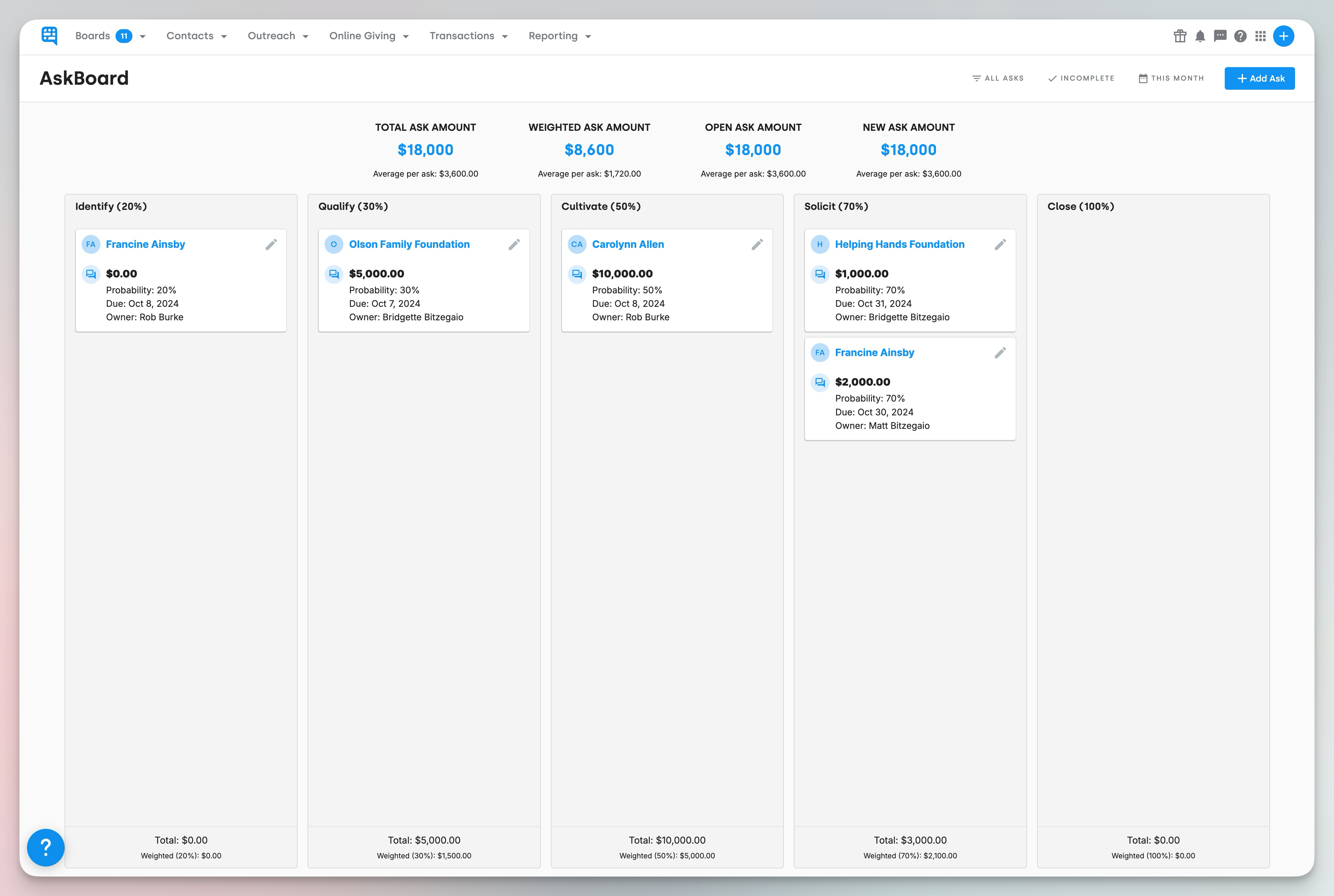
Scripts and templates you can steal
Curiosity opener
“Hey Sam, quick question. What kind of impact are you most excited to see in the next 12 months?”
One-page brief outline
- Headline that mirrors the donor’s interest
- 3-sentence story that shows the problem and change
- Budget snapshot with two options
- Timeline, owner, and how you’ll report back
Decision invite
“Would you be open to a 15-minute call this week to choose one of the two options I sent, or tweak them so they fit what you have in mind?”
Gratitude text after a yes
“Your gift is already at work. You funded the first clinic weekend scheduled for March 12. I’ll share a quick update after the first Saturday.”
Why this works now
Two truths are colliding. First, giving has momentum thanks to a stronger economy, which means capacity is there if you ask clearly. Second, donor counts remain under pressure in many segments, which means your 1 to 1 stewardship has outsized impact. Moves management helps a small team harness both realities with more focus and less frenzy.
Ready to run the play?
Start small. Pick 25 names. Map where each person sits on Hello, Learn, Align, or Ask. Set one next move per person. Protect your donor-first hours, then let the rhythm work.
If you want templates and a deeper walkthrough, open our guides on moves management, the 15 Hour Focus Framework, and the Relationship Loop. Built for small and growing fundraisers who want to focus on what matters most.



